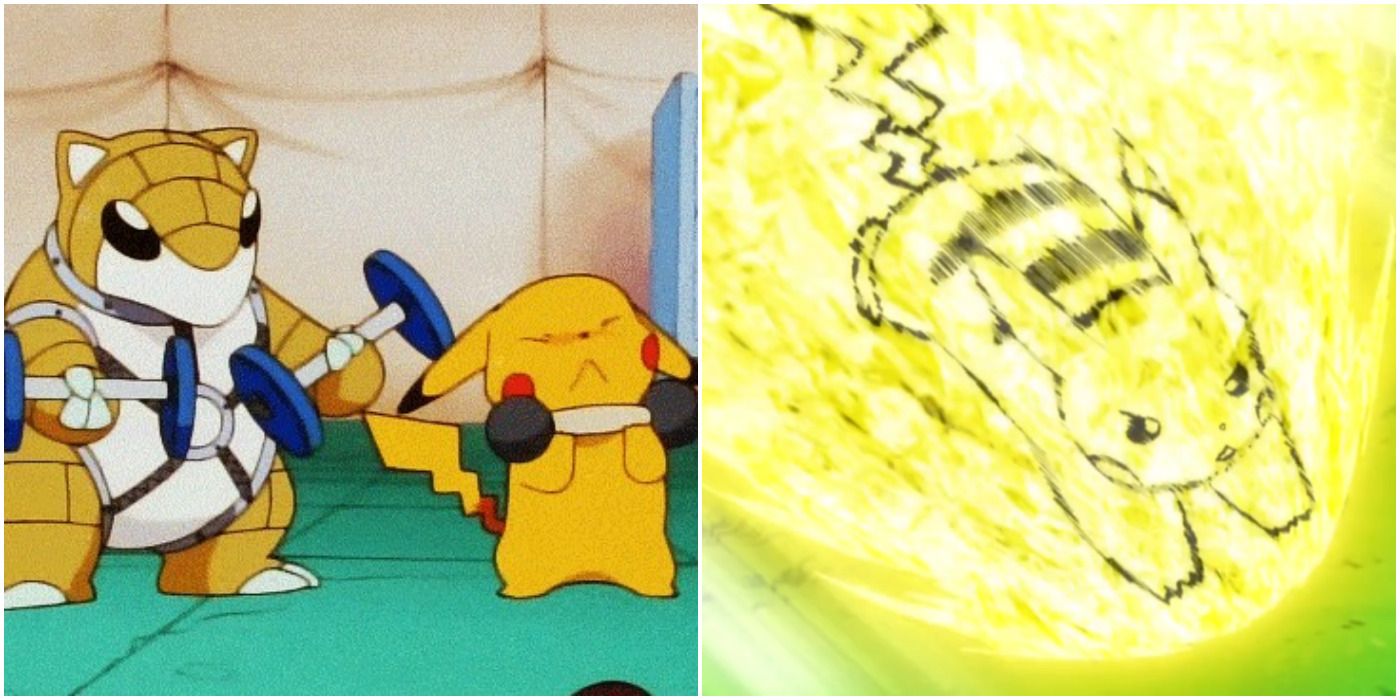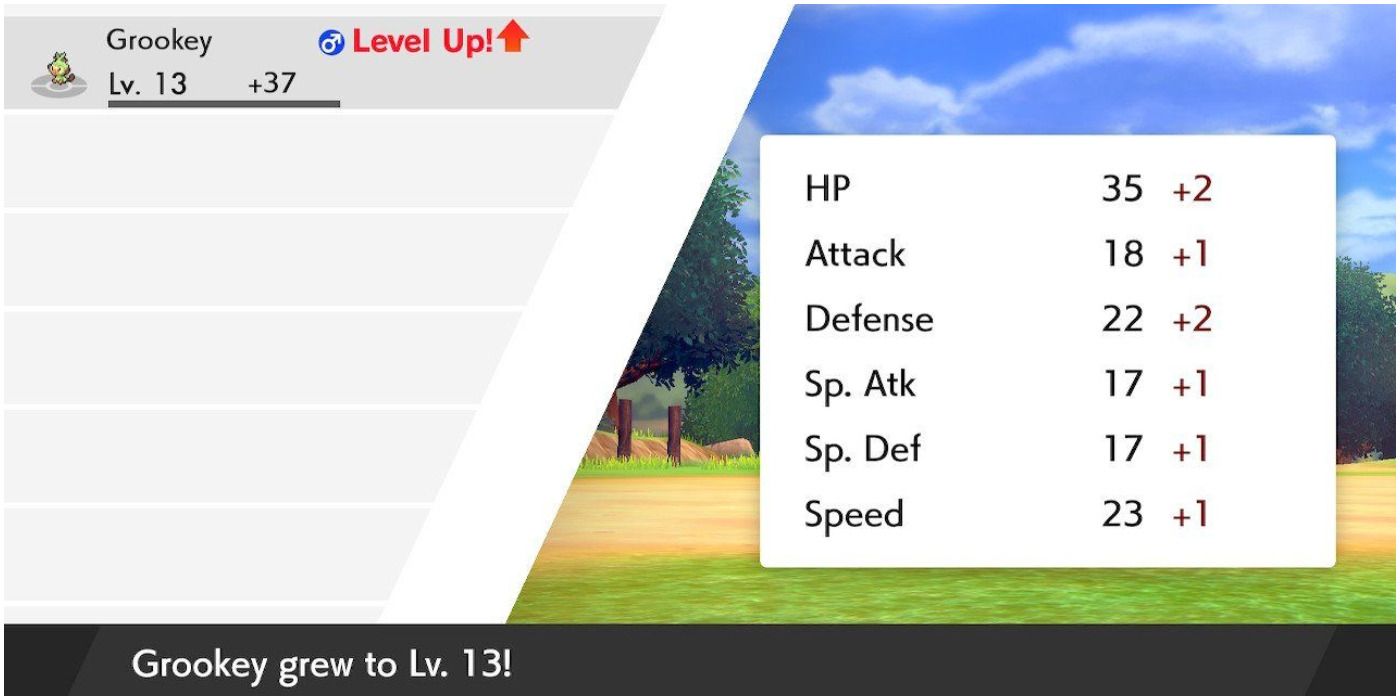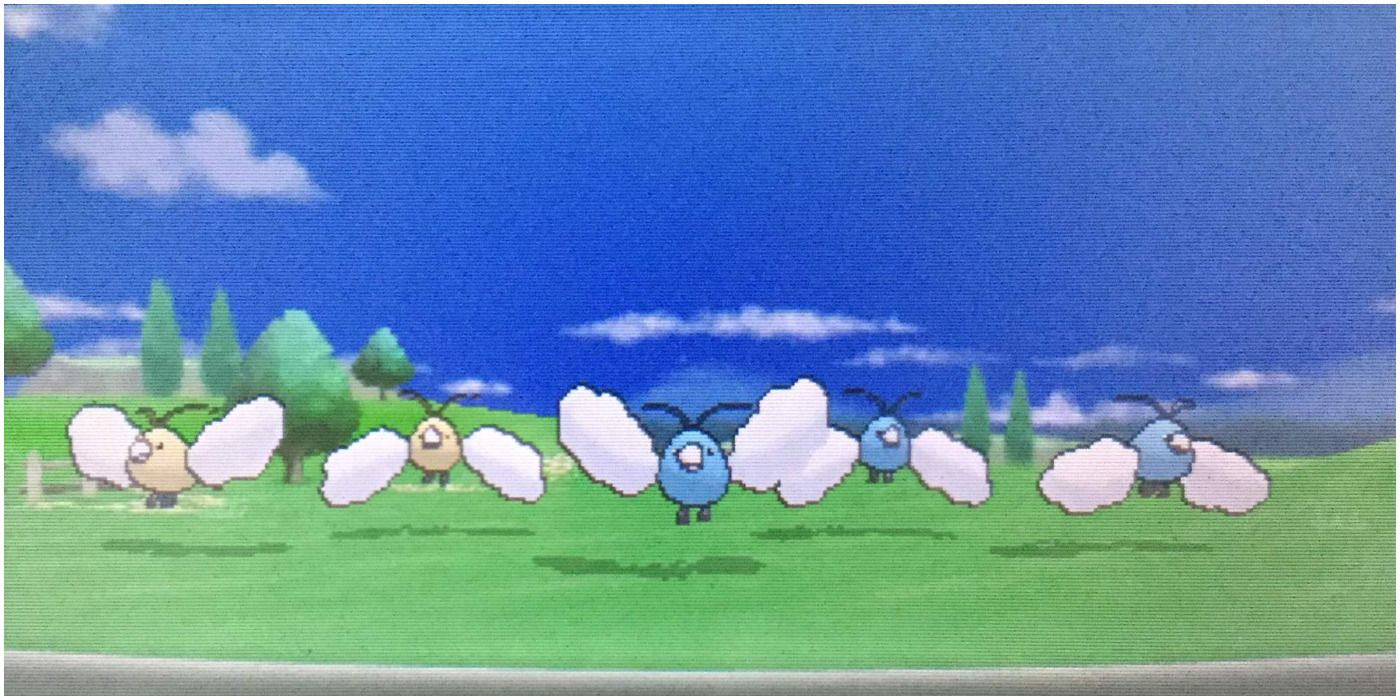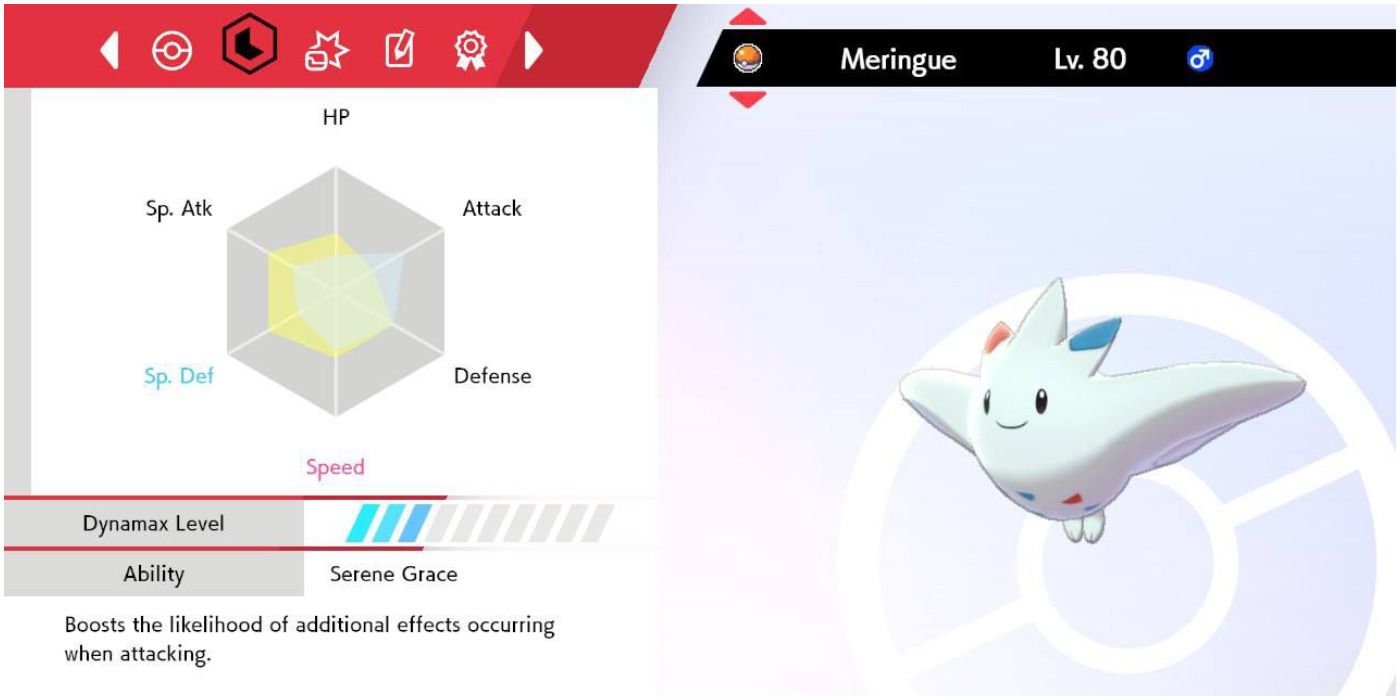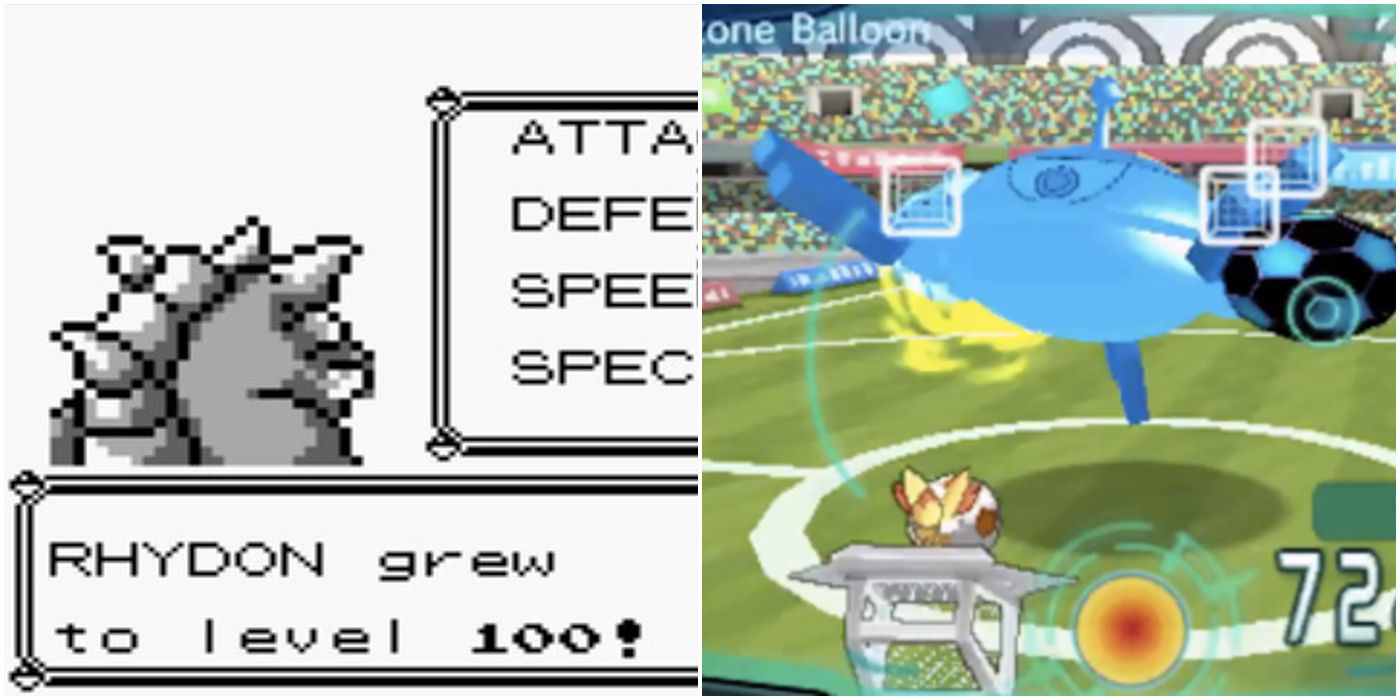Pokemon, despite its low barrier of entry, has a surprising number of complexities in its classic combat system. The average trainer likely won't encounter (or care about) mechanics beyond what's on their screen. But to be the very best like no one ever was, trainers need every edge they can get. One of those edges comes in the form of properly allocated Effort Values.
Effort Values, shortened to EVs, are a "hidden" system of points that influence the stats of a given Pokemon. When you successfully take down an opponent, your Pokemon is given experience points and a set amount of EVs. The basic explanation is that higher EVs make stats better. However, there's quite a bit more to break down with how they work, and the best ways to train EVs.
What Do EVs Do?
For every 4 EVs in a specific stat, the Pokemon will gain a single bonus stat point at level 100. The increase is negligible at smaller levels, but the difference between a Pokemon with EVs and one without is obvious. To give a rough example, a level 50 Pikachu with a neutral nature will have a flat 70 in Special Attack. A Pikachu that has gained a maximum amount of Special Attack EVs, on the other hand, will have 102 Special Attack.
There are limitations on how many EVs a Pokemon can gain. It is impossible for a single Pokemon to gain maximum EVs in every stat. Each Pokemon has a hard limit of 510 total EVs, and each stat has a hard limit of 252 possible EVs. That buff Pikachu from before, for example, would have 252 EVs in Special Attack. To give a practical example, a common stat spread for competitive Pokemon would have 252 EVs in two different stats, with the remainder put in whatever stat the trainer feels is best.
How Do Pokemon Gain EVs?
Pokemon earn EV's by defeating opposing Pokemon in battle. Each Pokemon gives a set number of EVs in a set skill each time they are KO'd. Pikachu, for example, will give the player 2 Speed EVs on KO. Thus, every two KO'd Pikachus will give an additional stat point. After massacring 126 Pikachus, a Pokemon's speed EVs will max out.
Unfortunately, there isn't a clear indication in-game to figure out which Pokemon gives what EVs. Players can try to guess, but even judging by base stats is unreliable. Online resources like Serebii or Bulbapedia are players' best bet to figure out which Pokemon they will need to grind.
Items & Minigames
Battling, however, isn't the only method to gain EVs. Players can also items like Vitamins and Feathers. Each Vitamin is worth 4 EVs, and each Feather is worth 1 EV. In games prior to Sword and Shield, a Pokemon was limited to 100 EVs from vitamins, but that limitation was removed in Gen 8.
- HP Up/Health Feather: HP
- Protein/Muscle Feather: Attack
- Iron/Resist Feather: Defense
- Calcium/Genius Feather: Special Attack
- Zinc/Clever Feather: Special Defense
- Carbos/Swift Feather: Speed
Additionally, there may be minigames that can be use to passively increase stats. In Sword and Shield, the Seminars from Hammerlocke University under the Poke Jobs can increase specific EVs based on how long the training lasts.
Tracking EVs
The hidden nature of EVs is an intentional design choice from Pokemon developers. It's a clever way of making them feel like real, living creatures, as they will have strengths and weaknesses that differentiate each individual from others. Cleverness, of course, gets in the way of optimization. Before Gen VI, there was no easy way to track EVs on a given Pokemon. Just get that notepad out and count carefully!
Fortunately, in the modern world, trainers are able to more easily able to track EVs. In Sword and Shield, players can press the "X" button on the stat screen to switch to a different graph that shows the EVs gained. Maxed stats will sparkle, indicating they have reached 252 and cannot be raised further. A fully-trained Pokemon will have a cyan graph, indicating a full 510 EVs have been gained. Players can even earn a fun ribbon for each fully-trained Pokemon!
EV Training Methods
EVs are an important part of training the best Pokemon. However, the thought of slaughtering 126 Pikachus in the name of fast speeds may seem both daunting and inhumane. It works, but it's a slow process. Vitamins work as well, but are expensive and require a substantial grind for money. Thankfully, Game Freak has given trainers ways to speed up EVs gained through battles with the use of held items and other, trickier mechanics.
Held Items For EV Training
The Macho Brace is the most easily obtainable EV-training item. At the cost of speed, a Pokemon will gain double the amount of EVs per battle. This reduces the Pikachu harvest in the example down to 63.
Meanwhile, "Power" items will give a bonus 8 EVs in a specific stat at the end of a battle, independent of the EVs gained from the opposing Pokemon:
- Anklet: Speed
- Band: Special Defense
- Belt: Defense
- Bracer: Attack
- Lens: Special Attack
- Weight: HP
For example, equipping the Power Anklet will give 10 Speed EVs per Pikachu, but a player could also equip a Power Lens to gain the normal 2 Speed EVs as well as 8 Special Attack EVs from one battle.
Pokerus
For lucky trainers, there's a rare (~1 in 21,845) chance a Pokemon will contract Pokerus. This beneficial virus doubles the amount of EVs gained from KO, similar to the Macho Brace. The effect stacks with the Power items as well, bringing that stat bonus up to 16 EVs per battle. Altogether, with Pokerus and the Power Anklet, it only requires 13 Pikachus to max the speed stat. The player saves time, and the Pikachu population will be grateful.
Reducing EVs On A Pokemon
Maxing out a stat is relatively easy with all the tools at hand. However, those who require more specific stat builds will need to be careful to allocate points properly. It's very easy to overshoot goals and mess up EV training, especially with the various combinations of items and Pokerus. If this happens, don't get discouraged! That Pokemon will not need to get sent to the farm; it just needs to be tuned a bit.
In some games, berries can be used to reduce stats. For example, if a player accidentally KO'd a Togedemaru in their Pikachu hunt, they will have gained unwanted Attack EVs. Players would want to feed their Pokemon a Kelpsey Berry to reduce those unwanted EVs by 10 points per berry.
- Pomeg Berry: HP
- Kelpsey Berry: Attack
- Qualot Berry: Defense
- Hondew Berry: Special Attack
- Grepa Berry: Special Defense
- Tamato Berry: Speed
If the player royally screws up a build or decides to use a different stat spread, there are ways to completely reset EVs. In Sword and Shield, the player can speak to Lady Clear on the Isle of Armor to reset EVs, but it will require the DLC.
Other EV Oddities & History
The EV system has been a key part of the series since Gen III. However, each game adds (or takes away) items and minigames that make the process of EV training easier to manage. Although most trainers will likely be spending their efforts on the latest entry, it's good to search efficient EV training methods for the individual games.
In Gens 1 and 2, the system was similar, but much harder to reliably track and manage. Every single stat could also be maxed out, which eliminates the interesting part of the modern EV system. There is one consistency between the two systems: EVs are factored into stats on level up. However, it wasn't until Gen V that Pokemon at level 100 could gain more EVs that are calculated into their stat total. It's odd, but the system works as intended for all players. As another fun fact, EV's are not a mechanic in any of the spinoffs, including games that have a leveling system.
EV Training may seem complex at first, but it's a simple process and can make Pokemon much more exciting to play. As long as players track everything properly, they'll be able to have specialized Pokemon for competitive battles in no time.

